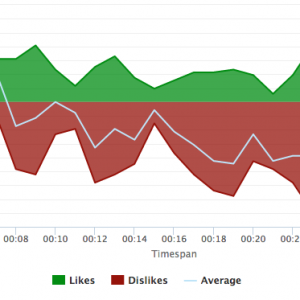Unlocking the Power of Consumer Insights Marketing

In today’s highly competitive business landscape, understanding your customers has never been more critical. Companies that can tap into the insights of their target audience can make better-informed business decisions, stay ahead of their competitors, and ultimately drive revenue growth. This is where consumer insights marketing comes into play.
Understanding Consumer Insights Marketing
Consumer insights marketing is the process of gathering and analyzing information about your target audience to gain a better understanding of their needs, behaviors, preferences, and attitudes. The insights derived from this process can help businesses develop effective marketing strategies, create products that resonate with consumers, and deliver better customer experiences.
Definition and Importance of Consumer Insights
Consumer insights refer to the understanding of consumer needs, motivations, and expectations that organizations can use to drive business strategy. By analyzing and interpreting various data sources, including demographic information, customer feedback, and social media activity, companies can create targeted, tailored marketing messages that speak directly to their customers’ individual needs.
Consumer insights are essential for businesses to stay competitive in today’s market. With so many options available to consumers, it is crucial to understand what drives their purchasing decisions and how to communicate with them effectively. By leveraging consumer insights, companies can create products and services that meet the needs of their target audience, resulting in increased customer satisfaction and brand loyalty.
Moreover, consumer insights can help businesses identify new opportunities for growth and innovation. By analyzing consumer behavior and preferences, companies can identify gaps in the market and develop new products and services that meet unmet needs. This not only helps businesses stay ahead of the competition but also drives revenue growth and profitability.
The Role of Consumer Insights in Marketing Strategy
Consumer insights play a critical role in developing effective marketing strategies. By understanding your target audience’s preferences, behavior, and motivations, you can create more targeted and personalized marketing campaigns that resonate with them on a deeper level. This not only improves the chances of converting customers but also leads to increased customer satisfaction, better engagement, and ultimately, brand loyalty.
One way that businesses can leverage consumer insights in their marketing strategy is by creating buyer personas. Buyer personas are fictional representations of your ideal customers, based on real data and insights. By creating buyer personas, businesses can develop a deeper understanding of their target audience and create marketing messages that speak directly to their needs and interests.
Another way that businesses can use consumer insights in their marketing strategy is by conducting market research. Market research involves gathering data about your target audience, competitors, and industry trends to inform your marketing strategy. By conducting market research, businesses can identify new opportunities for growth, understand their customers’ needs and preferences, and develop effective marketing campaigns that resonate with their target audience.
In conclusion, consumer insights are a crucial component of any successful marketing strategy. By understanding your target audience’s needs, preferences, and behavior, you can create more targeted and effective marketing campaigns, develop products and services that meet their needs, and ultimately drive revenue growth and profitability.
Gathering Valuable Consumer Insights
There are several ways to gather valuable consumer insights, both through primary and secondary research methods, and by leveraging social media and online reviews. However, it is important to note that the methods used to gather insights will vary depending on the type of business and the target audience.
Primary and Secondary Research Methods
Primary research, such as surveys and focus groups, involves gathering information directly from customers. This method allows you to ask specific questions that can provide deep insights into customer preferences and behavior. Surveys can be conducted online, through email, or in person, and can be designed to gather information on a wide range of topics, including customer satisfaction, product preferences, and brand awareness.
On the other hand, secondary research involves analyzing existing data sources, such as market research reports or government statistics, to gain insights into wider trends and patterns. This method can be useful for understanding industry trends and identifying potential gaps in the market.
Utilizing Social Media and Online Reviews
Social media and online reviews have become a valuable tool for gathering consumer insights. Platforms such as Facebook, Twitter, and Instagram provide a wealth of information about consumer behavior, preferences, and opinions. By monitoring social media activity, companies can gain insights into what their audience is talking about, how they interact with products, and what they like or dislike about them. This information can be used to inform marketing strategies, product development, and customer service initiatives.
Similarly, online reviews on platforms such as Yelp and Google offer a wealth of information about customer experiences and satisfaction, providing valuable feedback to companies. Reviews can be analyzed to identify common themes and areas for improvement, and can also be used to identify brand advocates who can be leveraged for future marketing campaigns.
Leveraging Customer Surveys and Interviews
The use of customer surveys and interviews can provide valuable insights into customer behavior, preferences, and expectations. These methods can be used to solicit feedback on specific products or services, as well as to gauge overall customer satisfaction. Surveys can be conducted online or in person, and can be designed to gather information on a wide range of topics, including product quality, customer service, and brand loyalty.
Interviews can be conducted in person or over the phone, and can be used to gather more in-depth insights into customer behavior and preferences. By understanding the customer’s perspective and taking their feedback into account, companies can create more personalized marketing campaigns and improve overall customer experience.
In conclusion, gathering valuable consumer insights is essential for any business looking to succeed in today’s competitive marketplace. By utilizing a combination of primary and secondary research methods, as well as social media and online reviews, companies can gain a deeper understanding of their target audience and create more effective marketing strategies.
Analyzing and Interpreting Consumer Insights
Consumer insights are a powerful tool for businesses looking to gain a better understanding of their target audience. By analyzing and interpreting these insights, companies can gain valuable information about their customers’ needs, preferences, and behaviors.
One of the most important techniques for analyzing consumer insights is identifying patterns and trends. By examining data over time, businesses can gain insights into what products and services customers are interested in, how they like to engage with brands, and their purchasing behavior patterns. This information can be used to prioritize product development efforts and create more targeted marketing campaigns that are more likely to resonate with their target audience.
Identifying Patterns and Trends
Identifying patterns and trends in consumer behavior is a complex process that requires a deep understanding of data analysis techniques. By using tools such as regression analysis, data visualization, and predictive modeling, businesses can gain insights into the underlying drivers of consumer behavior. For example, businesses can use regression analysis to identify the relationship between customer age and purchasing behavior. This information can be used to create more targeted marketing campaigns that speak directly to the needs and interests of specific customer segments.
Another important technique for identifying patterns and trends is social listening. By monitoring social media channels, businesses can gain insights into the conversations that customers are having about their products and services. This information can be used to identify emerging trends and to create more targeted marketing campaigns that resonate with customers.
Segmenting Your Audience
Segmenting your audience is another important technique for analyzing consumer insights. By segmenting audiences based on demographic, behavioral, or psychographic characteristics, businesses can create more personalized campaigns that speak directly to their individual needs and interests. For example, businesses can segment their audience based on age, gender, or income level to create more targeted marketing campaigns that are more likely to resonate with specific customer segments.
Another important technique for segmenting your audience is customer profiling. By creating detailed profiles of your customers, businesses can gain insights into their needs, preferences, and behaviors. This information can be used to create more targeted marketing campaigns that speak directly to their individual needs and interests.
Assessing Consumer Needs and Preferences
Assessing consumer needs and preferences is a critical step in developing effective marketing strategies. By understanding what your customers want from your products and services, businesses can tailor their marketing messaging to speak directly to their needs and interests, improving the likelihood of conversion and brand loyalty.
One important technique for assessing consumer needs and preferences is customer surveys. By conducting surveys, businesses can gain insights into their customers’ opinions and preferences. This information can be used to create more targeted marketing campaigns that speak directly to their individual needs and interests.
Another important technique for assessing consumer needs and preferences is customer feedback. By listening to customer feedback, businesses can gain insights into the strengths and weaknesses of their products and services. This information can be used to improve product quality and to create more targeted marketing campaigns that speak directly to their customers’ needs and interests.
In conclusion, analyzing and interpreting consumer insights is a critical step in developing effective marketing strategies. By using techniques such as identifying patterns and trends, segmenting audiences, and assessing customer needs and preferences, businesses can gain valuable insights into their target audience, improving the likelihood of conversion and brand loyalty.
Turning Insights into Actionable Strategies
The ultimate goal of consumer insights marketing is to turn insights into actionable strategies that can drive business growth. By leveraging the insights gained from analyzing customer data, companies like Spot Trender can personalize marketing campaigns, enhance product development, and improve customer experience and retention.
Personalizing Marketing Campaigns
Personalizing marketing campaigns based on consumer insights can help companies create more targeted and effective marketing messages that resonate with their target audience. By crafting personalized messaging that speaks directly to the individual needs and interests of customers, companies can improve the chances of conversion and brand loyalty.
Enhancing Product Development and Innovation
By using consumer insights to inform product development, companies can ensure that they’re creating products that resonate with their target audience. By understanding customer needs and preferences, companies can create products that are more likely to meet customer expectations, improving the chances of success in the market.
Improving Customer Experience and Retention
Improving customer experience and retention is a critical part of business growth. By understanding customer needs and preferences, companies can create more personalized experiences that keep customers engaged and satisfied. This not only improves the chances of retention but also leads to positive word-of-mouth marketing, further driving revenue growth.
Conclusion
Consumer insights marketing provides businesses with the tools they need to tap into the minds of their customers and gain a deeper understanding of their needs, preferences, and behaviors. By leveraging this information to create more targeted marketing campaigns and personalized experiences, companies can create deeper connections with their audiences, drive revenue growth, and stay ahead of their competitors in today’s fast-paced business landscape.







